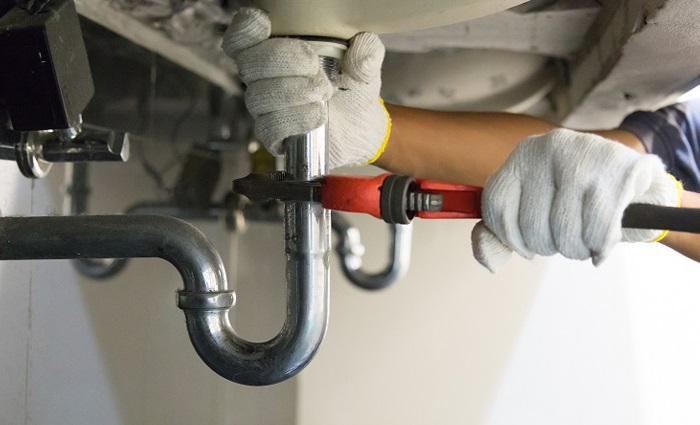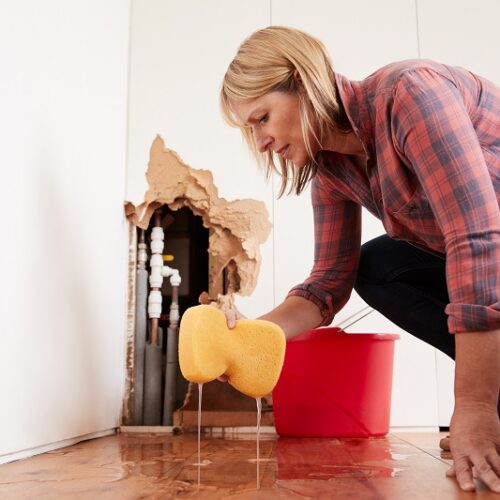Clogged pipes and drains sometimes start out as a minor problem but can quickly escalate into major headaches. It can cause slow water drainage, corrosion, flooding, and in some cases, the need for expensive repairs.
But did you know that tree roots could be very stubborn and determined? Attracted to water and nutrient sources, they start growing towards a sewer line and eventually cause severe problems.
If tree roots invade your pipes, they’ll surely do significant damage. But there are ways to detect and prevent them from getting into your sewer line. Here’s how.
Common Signs of Tree Roots in Sewer Lines
Different signs show that you might have tree roots in your sewer lines. They could be sinkholes in the yard, slow drains, bad smells, fast tree growth, or gurgling toilets.
Due to the location of the sewer and pipes, tree roots can easily grow right through them, leading to leaks or other problems that could fastly become significantly severe.
One sure sign that you probably have tree roots in your sewer lines is the presence of soft or saturated spots in the yard.
If you believe that you’re not experiencing any of these issues but notice that one of the trees is growing faster than the others, it’s probably because it’s getting more nutrients, water, and oxygen than the other trees because its roots have gotten into your sewer lines.
Conduct a Visual Inspection
First of all, if you don’t know the exact location of your sewer lines, you should contact your local public works department to ask them about the location of the underground utilities.
Even if you don’t have tree root problems, it’s always useful to know the location of your cables, lines, or pipes in case of other issues.
When you find the exact location, visually inspect the area before continuing with the next step. It’s very important to inspect regularly your sewer line for any signs of tree roots to ensure they’re not causing any issues.
Professional Inspection Methods
The next step is to find a professional plumber to perform a quality inspection using special methods.
A reliable expert plumber will inspect your drainpipes using a camera probe to see the damaged areas. The sewer camera is a small gadget that will successfully check your pipes for any signs of root intrusion.
Some people believe they can handle a tree root issue successfully by themselves but a professional plumber has the experience, skills, and knowledge to identify the issue and the right tools to get rid of it for good and take care of the damage.
Spending a few bucks on a professional will surely pay you off in the long run.
Preventive Measures
If you don’t want tree roots to destroy your sewer line, it’s really important to catch them before they even cause any damage.
To do so, there are several preventative practices you can perform to stop them from invading your sewer lines:
- Do regular inspections of your septic tank and sewer lines. This is actually one of the main reasons why tree roots get into your sewer lines in the first place. People forget to inspect these utilities regularly, and that’s how the issues happen. By performing regular inspections, you can catch roots or other debris on time and contact a plumber before the presence of any damage.
- To reduce the chance of roots getting into your sewer lines, you must regularly trim any trees close to them. This preventive measure can save you big headaches.
- Another preventive measure is to be alert to the warning signs. Knowing the signs will help you handle the problem before it worsens. Stay alert for signs of slow-moving drains, drain clogs, overflowing drains, gurgling sounds coming out of the toilet, or bad smells. All these signs clearly show that there might be an undergoing problem with the plumbing system.
- You can create a physical barrier between the sewer lines and the trees. You can use a slow-release chemical solution that minimises the possibility of tree roots getting into your sewer lines through cracks and breaks. Another effective barrier is the wood or metal barrier, which you can bury around the roots about 6 inches to a foot deeper than your pipes.
Tree Maintenance Tips
Planning your landscaping carefully is probably the best way to prevent tree roots from invading your sewer lines in the first place.
Planting trees near your sewer lines would be foolish, but if you have trees planted anyways, you should regularly maintain them. Large trees should be planted away from sewer line areas.
Removing trees that are located too close to your sewer lines is even recommended. But to do so, you’ll want to hire a professional tree service to remove them safely and effectively. If you don’t want to remove the trees, then you should trim the tree roots regularly.
You’ll need a pruner to get rid of roots or branches near the sewer lines. Again, a professional tree trimmer can do this job safely without damaging the surrounding structures.
Chemical and Mechanical Root Removal
The chemical method is used to destroy and kill the tree roots that are intruding on your sewer lines.
Remember that professional plumbers should perform tree roots in sewer line removal methods for successful results and no damage.
Some effective chemicals used in killing tree roots are copper sulfate, potassium hydroxide, and others. Or you can go for the mechanical method, where the tree roots are removed manually.
Again, this method is best to be performed by a reliable plumber. He’ll use a mechanical drill specifically designed to go down the sewer line and remove the roots.
After successfully completing this method, the pipes will flow freely again. Remember that both methods aren’t long-term solutions and won’t take care of the problem for good.
Long-Term Solutions
Probably the best long-term solution to getting rid of tree roots in your sewer lines is using a cured-in-place pipe (CIPP). This cured-in-place pipe is a trenchless rehabilitation method used to repair existing pipelines. It is applied to the inside of the pipe.
Once the existing pipe is lined with CIPP, you can stay rest assured of having no roots in your sewer lines.
Regular Maintenance and Monitoring
Of course, you should never forget about regularly monitoring your tree roots, plumbing system, and sewer line. Inspecting your sewer line is recommended to be done every two years, especially if you’ve experienced any issues.
Also, cleaning the sewer pipes regularly will help you avoid severe sewer repairs. Proper maintenance and monitoring will not only help you prevent root growth in your pipes but also will help you notice early signs if any part of the system needs repair or replacement.
Conclusion
Taking on-time measures will help you protect your pipes from tree roots and other issues and save you lots of money on repairs, expensive parts, or tools.
Preventative maintenance has proven to be most effective and financially manageable in the long run. Trying to fight tree roots in your sewer lines by yourself might seem like a losing battle.
But if you’re experiencing this issue, you can also seek the help of a professional plumber to take care of the tree roots in your sewer line.




